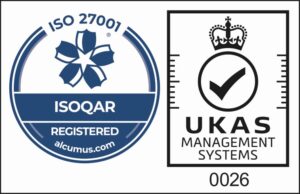Disaster Recovery as a Service (DRaaS): Ensuring Business Continuity in the Digital Age
In an era where data drives decisions and operations, protecting it becomes paramount. Disasters, both natural and human-induced, can strike unexpectedly, making it crucial for businesses to have a recovery plan in place. DRaaS comes as a beacon of hope, offering a cloud-based solution to address these challenges head-on.
What is DRaaS?
Disaster Recovery as a Service (DRaaS) is a cloud-based service model that allows an organization to backup and recover its data and IT infrastructure in the event of disruptions. It relies on third-party cloud resources, negating the need for a secondary physical data center.
Key Components of DRaaS
- Backup: Regularly scheduled backups of critical data to the cloud, ensuring up-to-date recovery points.
- Recovery: Fast and efficient recovery of data, applications, and IT infrastructure, minimizing downtime.
- Replication: Continuous or scheduled replication of data to the cloud, ensuring data consistency.
- Failover: Redirecting user traffic to the cloud environment if the primary environment becomes unavailable.
- Failback: Restoring operations back to the primary environment once it’s up and running post-disruption.
Why DRaaS? The Modern Business Imperative
- Affordability: DRaaS eliminates the need for expensive secondary data centers or recovery sites, making disaster recovery accessible to even small businesses.
- Scalability: Being cloud-based, DRaaS solutions can easily scale to accommodate growing data needs.
- Compliance: Many industries have regulatory requirements around data protection. DRaaS ensures businesses remain compliant.
- Testing: DRaaS providers offer regular disaster recovery testing, ensuring that the recovery plan is always effective.
- Expertise: DRaaS providers specialize in disaster recovery, ensuring businesses benefit from best practices and the latest technologies.
Benefits of DRaaS
- Reduced Downtime: With DRaaS, businesses can recover from disruptions rapidly, ensuring minimal service interruptions.
- Cost-Effective: Only pay for what you use. No need for capital expenses on redundant hardware or secondary data centers.
- Enhanced Security: DRaaS providers implement robust security measures, ensuring data remains protected against threats.
- Simplified Management: A unified cloud-based dashboard provides a holistic view of the recovery environment, simplifying management.
- Peace of Mind: Knowing there’s a robust recovery plan in place allows businesses to operate confidently, even in uncertain environments.
In the interconnected digital landscape, any downtime can have ripple effects, impacting reputation, customer trust, and revenue. DRaaS emerges as a resilient shield against such disruptions, ensuring businesses remain operational and data-protected, regardless of unforeseen challenges. As the business world continues to evolve, the importance of robust disaster recovery solutions like DRaaS only becomes more pronounced.




